Chris Meyer, President, Ontario Association of Physics Teachers
chris_meyer1@sympatico.ca
Our first quadmester of teaching has been filled with many surprises. A big surprise for me was how well cooperative group learning worked in my class — I was quite nervous and doubtful about this! In the end, it allowed my colleague Mike Doig and me to deliver a very rich physics course that used simultaneous learning from day one. In this article, I will share our strategies, which I hope will help you with your teaching. Read on!
Meeting the Challenges of Simultaneous Learning
Simultaneous (also called synchronous) learning makes the planning, preparation and execution of our teaching more complex at each step; at any moment there will be more going on. Teachers are going to feel stretched, pulled in many directions at once. One remedy for this is cooperative group work, which might prevent us from being stretched too far out of shape. Another is removing more content from our courses: most teachers probably cut important content and experiences during quad one, but this likely needs to happen again. Teachers are not being given more time or resources to manage the demands of simultaneous learning, so the only accommodation we can afford ourselves is to moderate the pace of our teaching. If we do it carefully however, it might better match the pace of student learning in these unusual circumstances.
Good Learning Requires Interaction
Our school board, the TDSB, created a quadmester schedule which splits each class into two cohorts that alternate in the mornings between in-person learning in school and learning at home. Before the start of the first quadmester, my colleague Mike Doig and I decided that students won't be able to do much meaningful learning at home in the mornings. The reason being, learning is a social process. If students are exploring ideas and practicing skills that involve some sophistication, a recorded lesson or written instructions will not be enough. Good learning requires social interaction: the sharing of thoughts, the debating of ideas, trying things out, and getting immediate feedback. If students only have these experiences during our in-person classes, which account for 40% of the total course time, their skills and understandings will not develop properly. In our model, we taught six new lessons (of our traditional lessons) every four-day cycle, two of which were in-person. That means students would have a four-lesson stretch in each cycle with very little immediate feedback, which would be a recipe for trouble. We made the decision that students at home will do the same lesson as students in class and learn in the same way by working in cooperative groups. This way, our students have been learning simultaneously since the start of quad one. In the rest of this article, I will share how we manage our groups and the factors that make them successful.


Train Students How to Behave and Learn Virtually
Our courses began with the afternoon virtual lessons. In our traditional classes, our goal on the first day is to get students working in their cooperative groups as quickly as possible. This is still the goal for our first virtual class. We began with a quick technology introduction and explanation of appropriate online behaviours. Here is the
presentation we used to do that.
This first group lesson only involved simple tasks to help students get used to the online meeting software and some of the routines that we would regularly use like setting up a Jamboard.( https://jamboard.google.com/) Our second lesson had students complete a
group work assignment using Google docs and Google classroom that helped train them in the group work roles.
After that, it was the same routine each day, morning or afternoon, in-person or online: we meet together as a class, summarize the previous lesson, introduce the new lesson, and within 5 minutes start students working in their groups.


Structure and Accountability are Important
Students learn well in groups when their work is highly structured and follows a familiar routine. There is no doubt how to start, what process to go through, and what each student is responsible for doing. This allows students to start quickly and work productively with minimal prompting from the teacher. Since we are, of course, teaching science, there are lots of observations to make and ideas to test. An online version of these observations is available for students working virtually, which they can explore and return to at anytime. This is important because it allows the groups to work independently of the teacher who is very busy with the in-person class! Here is an example of a Google Classroom assignment with the observation videos:

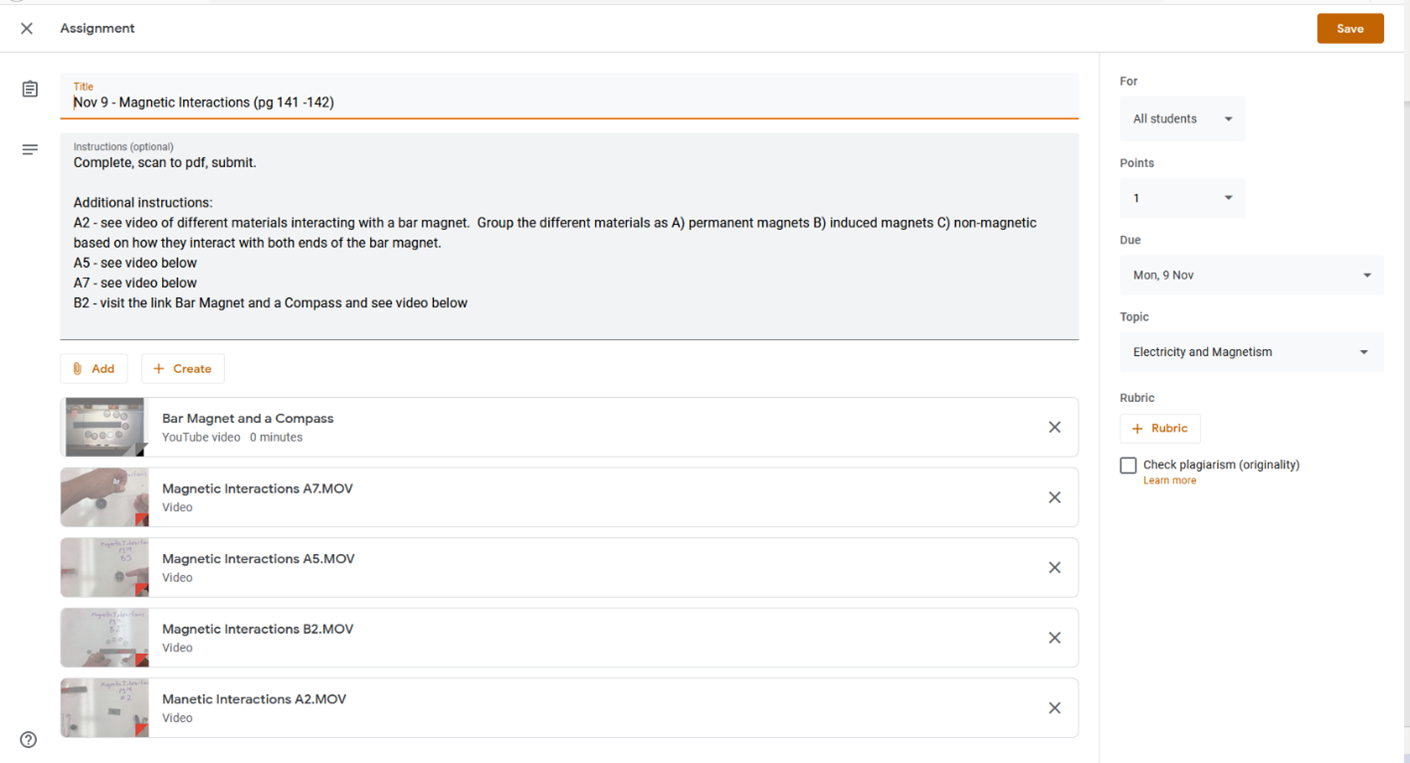
The lessons we use have detailed worksheets that guide students through the exploration of the concepts. These replace the traditional lesson of the teacher and provide students with new information right when they need it — no need to wait for the teacher! Here is
an example. We have similar
worksheets for our grade 9 science course. After our first in-person class, students have a physical copy of all the lesson worksheets so they are ready to learn! If you don't have similar sheets for your own students, consider taking your regular lesson and splitting it up into a series of questions for students to discuss with some explanations in between. Without a clear guide for their work, such as these sheets, students easily get lost or lose focus. Our homework is similarly structured.
The high level of structure helps create individual accountability. Students have clear roles to carry out when working in a group. They also have individual work they need to submit at the end of each lesson. They soon learn each lesson is a good 60 minutes of work, so it keeps them on their toes! I especially like how student work is mostly handwritten but submitted digitally. Impersonal digital work is very easy to copy.

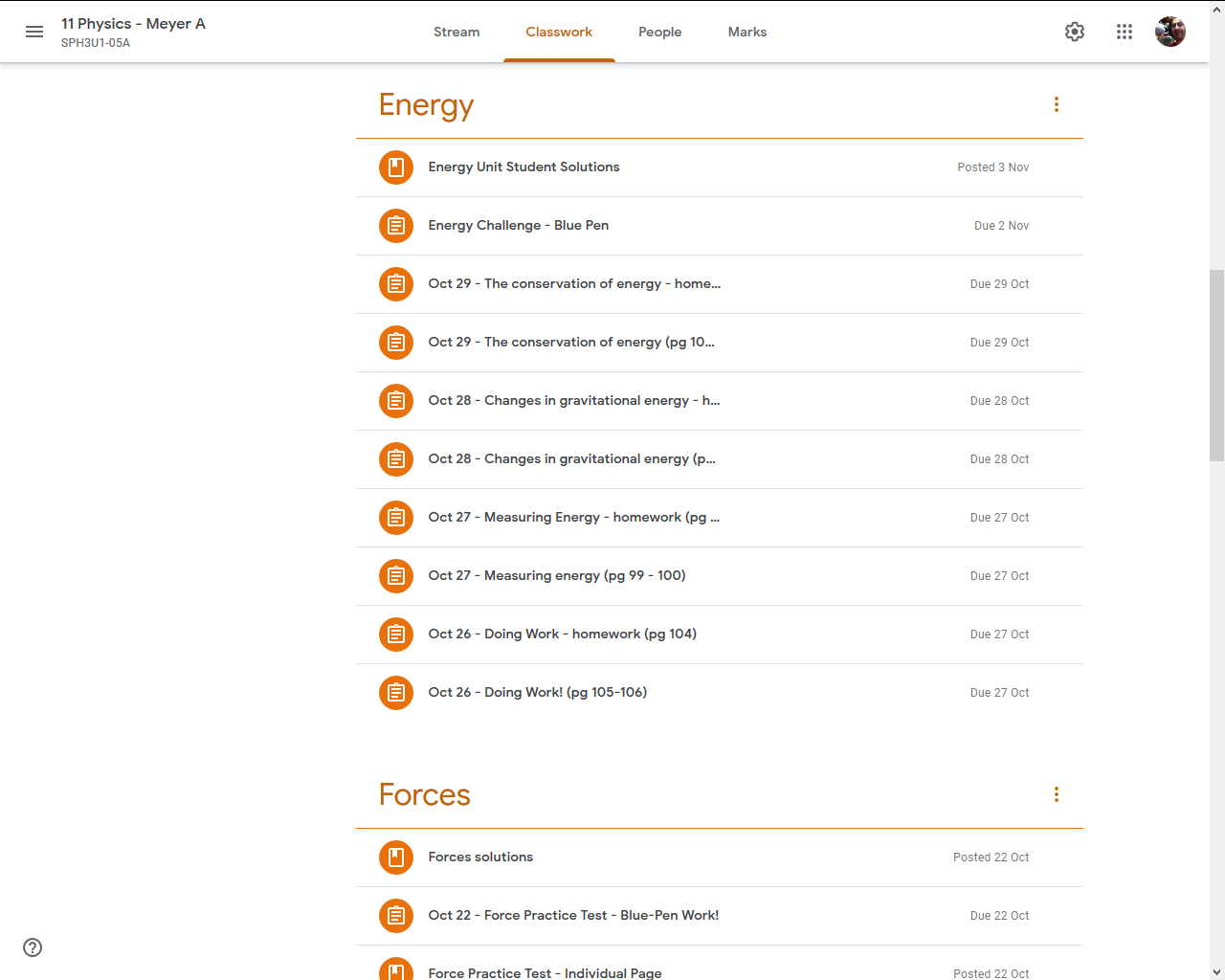 The Role of the Teacher is Streamlined
The Role of the Teacher is Streamlined
Cooperative group work frees up the teacher to focus on helping students with their learning; the teacher is not using precious time transmitting information or giving copious instructions. During our virtual afternoons, I spend my time moving from group to group in their breakout rooms to answer their questions and check for understanding. In the mornings, I leave our virtual class meeting open so students at home can call out my name if their group needs assistance. Because the lessons are highly structured, students working virtually in the morning are able to complete much of the work, which allows the teacher to focus on the in-person students. I also send messages to the online groups inviting them back to the main classroom meeting if we have a helpful class discussion.
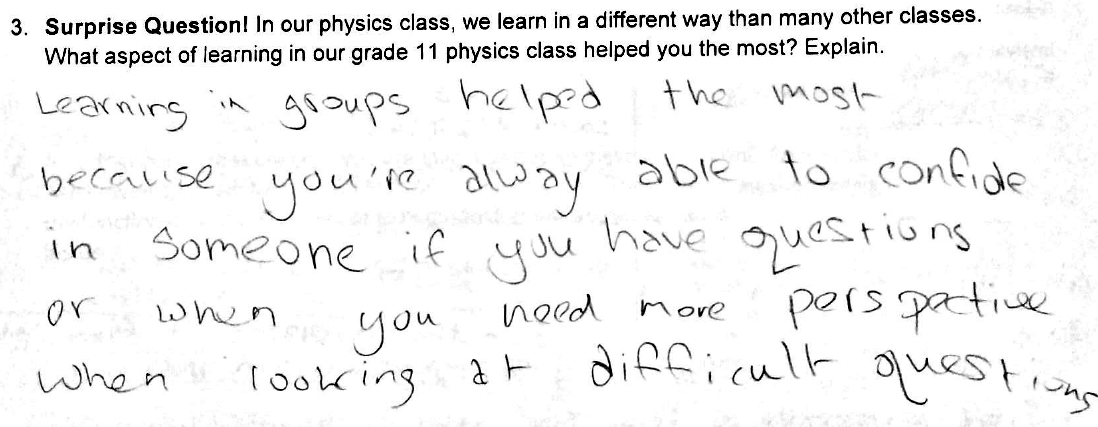 The Challenges of In-Person Group Work
The Challenges of In-Person Group Work
In some ways, managing online group work is easier than in person. With the public health and safety restrictions due to COVID-19, we had to find a different way of physically arranging our students to work in groups. We managed this by adding desks to the ends of our fixed tables. Our students are assigned to one of the four spots at each group and they sit facing one another roughly 2 meters apart. The geometry of this actually worked out quite well!
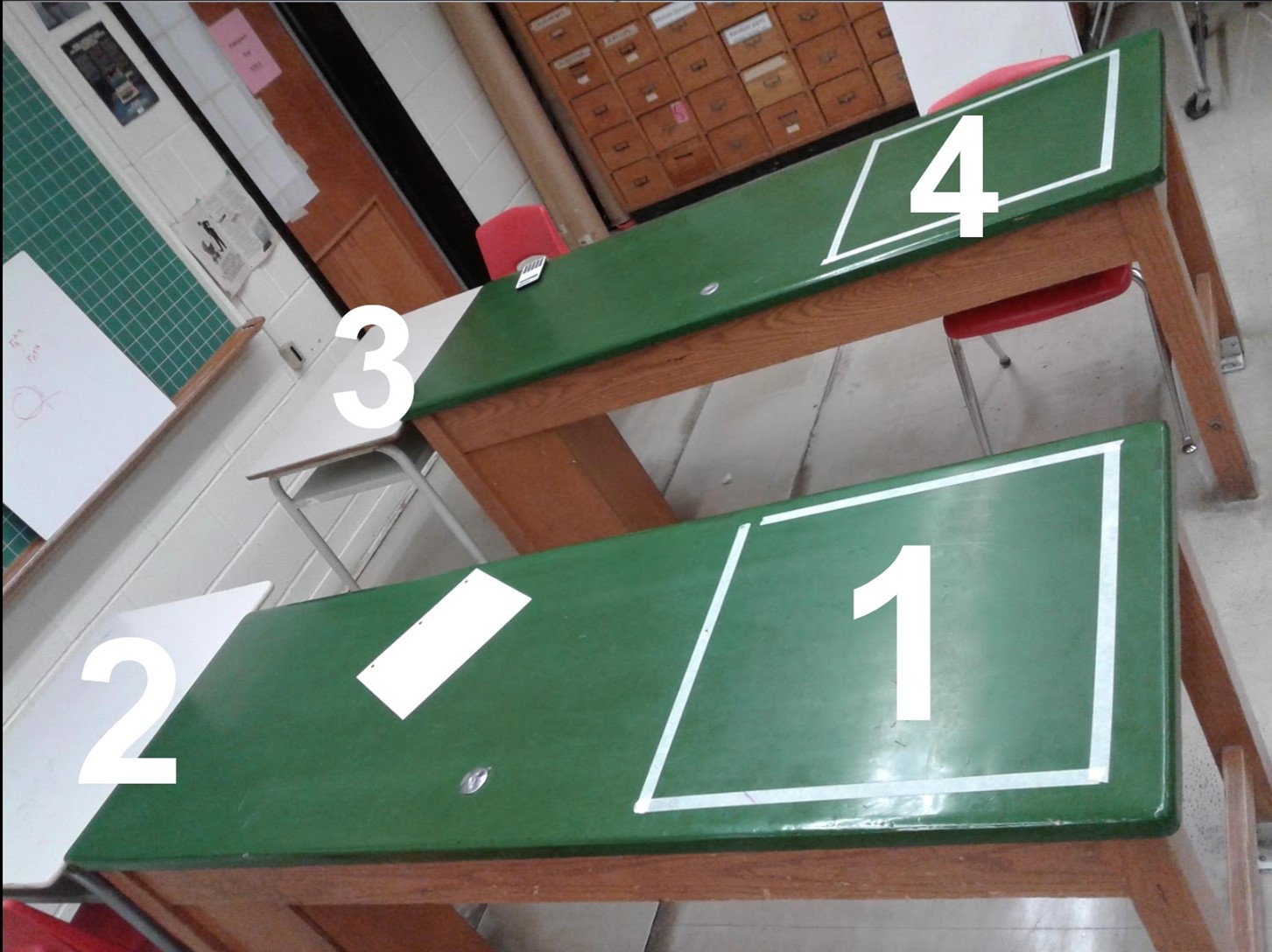
This arrangement does make for an awkward experience since we don't normally sit this far apart when we talk and share ideas. Luckily, the smaller number of students in the room made it easier to hear group members talking while seated far apart. Due to the interactive nature of group work, we had to constantly remind the students about our new classroom protocols: don't hover over one person's paper to see what they're doing, use whiteboards to show what you are working on, but don’t share the whiteboards! Movements around the room had to be carefully choreographed.
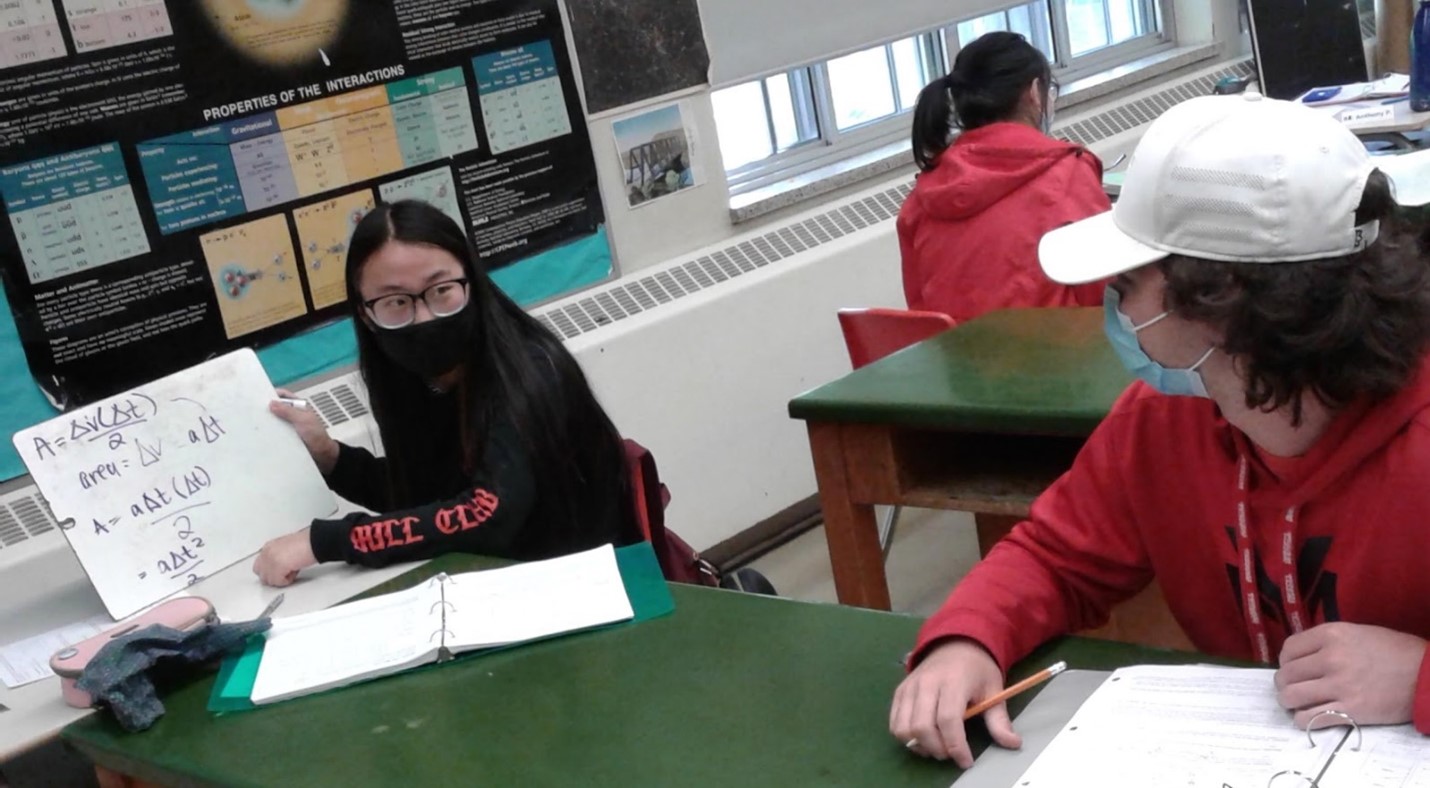
Overall, our groups have worked really well both in-person and online. Here they are in action:

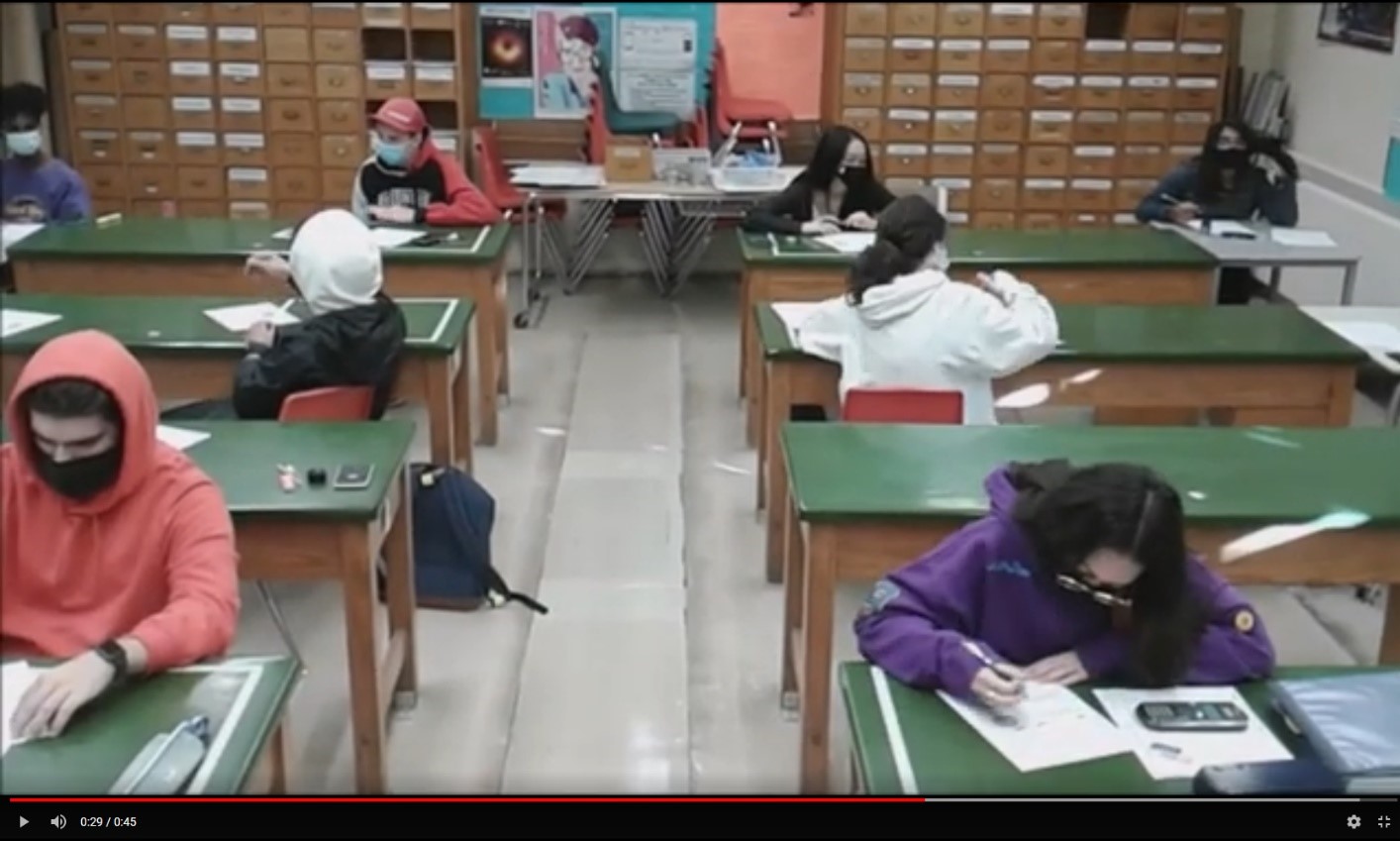 Why Did Cooperative Groups Work?
Why Did Cooperative Groups Work?
- Training: Starting on day 1, our students were trained how to work effectively in groups and what their new learning expectations were.
- High Structure: Each lesson is structured with lots of supports so individuals know what to do and groups can work effectively on their own.
- Individual Accountability: Students have individual work to submit each day.
- Teacher support: The teacher can focus on helping students rather than delivering content. Students don’t feel left on their own.
- Consistency: From the first day to the last, our main mode of learning in-person and virtually was cooperative group work. There were lots of occasions of teacher-led learning, but they were usually short and targeted to an immediate learning need. Our regular use of group work allowed students to become comfortable with it, get good at it, and trust that they could learn well through it.
- Meaningful: Students enjoy cooperative group work when it is both well structured and meaningful. In our group activities, students are constantly writing about their own thoughts and ideas as they explore science. This is intrinsically more meaningful than writing down notes, which represent the thoughts of another person that they don't necessarily connect with. In our lessons, it is the students who do the talking, thinking and writing, which means it is the students who do the learning. They sense this almost right away and generally respond with improved learning behaviours.

The student comments you have seen in this article are from my students on their first test this past quadmester. About half of them specifically mentioned group work in their response.
The Challenges We Faced
This course structure is time consuming to prepare. Each lesson required us to set up equipment for the in-person cohort and pre-record experimental observations for the virtual cohort. To start each morning class we had to physically prepare the room, launch the virtual meeting, publish the Google classroom assignments, start the lesson using a webcam, get the in-person groups going, and start the breakout rooms for the virtual groups. This is a lot to juggle. But after a busy start, the class would settle in very smoothly for almost 4 hours of good-quality, focused work.
Will this work for me?
Yes, because it satisfies the social demands of human learning and helps with the new demands of simultaneous learning! If you are new to many of these ideas, it can feel overwhelming. A normal response is to think, “I might try this a bit here and there and see how it goes”, and I definitely encourage teachers to do exactly that. Just keep in mind that in education, consistency is the name of the game. It takes a while for both you and your students to get used to cooperative group learning; regularly changing gears between this and more traditional direct instruction makes this harder — that was my experience when I started. Also keep in mind that I have been describing a grade 11 physics class. When I teach grade 9 science, I use the same pedagogy and course design as my physics classes, but I adjust them to the maturity level and learning needs of this age group. This usually means more structure and check-ins to monitor student learning and behavior.
Final Thoughts
I hope this has been helpful and wish you the best for your teaching this year! Please feel free to contact me if you have any questions. The final word goes to our students from the survey they completed at the end of their first quadmester.
Next quad, students will start their physics studies on November 23. The setup of their learning experience will be similar to what your’s was. What one piece of advice would you give to these students that you feel will help them be successful in this learning environment?
- “don't be shy with your group. During online and in class the learning happens when you work with each other. 4 brains are always better and more efficient than one.”
- “One piece of advice I would give is that in this new experience, it is mainly about learning not just physics but also group work and teamwork. There will always be people around you that can help you on things you don't fully understand or something new you have learned.”
- “Try to communicate with your groupmates as much as possible. It may not seem so helpful at the start, but as questions get more complicated, discussing and answering the questions together becomes very helpful.”
- “One piece of advice I would give to these students is to use the breakout groups to their advantage. I found it to be a very helpful tool to check my understanding as well as deepen it.”
- “A piece of advice I would give is to use your breakout groups to your advantage. I felt one of the best things about this course was how I could talk and discuss answers with my fellow peers bouncing ideas off of each other.”
- “Always do your work and lessons in your breakout groups in online classes because its much easier and you can share opinions even though you might be too shy to be the first one to unmute.”
Tags: Pedagogy, Remote Learning










